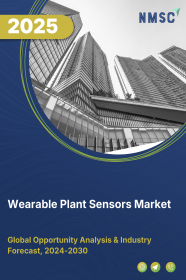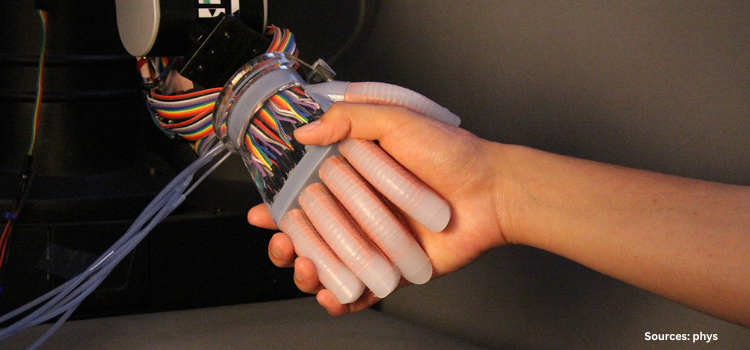Asia-Pacific Eye Tracking Market by Type (Head Mounted Eye Tracker and Remote Eye Tracker), by Component (Hardware and Software), by Application (Assistive Communication, Academic Research, Consumer Behavior Research, Usability Testing and Other Applications), and by End-User Industry (Retail, Automotive, Healthcare, Government and Others)- Opportunity Analysis and Industry Forecast, 2024– 2030
Industry: Semiconductor & Electronics | Publish Date: 02-Jan-2025 | No of Pages: 187 | No. of Tables: 133 | No. of Figures: 78 | Format: PDF | Report Code : SE2452
US Tariff Impact on Asia-Pacific Eye Tracking Market
Trump Tariffs Are Reshaping Global Business
Asia-Pacific Eye Tracking Market Overview
The Asia-Pacific Eye Tracking Market size was valued at USD 402.5 million in 2023, and is predicted to reach USD 1725.8 million by 2030, at a CAGR of 21.9% from 2024 to 2030. The eye tracking industry is a comprehensive ecosystem of products, services, and technologies designed to measure and analyze eye movements, gaze direction, and fixation points. The market includes specialized hardware such as cameras, sensors, and light sources, as well as software solutions for data processing and analysis.
Eye tracking, also known as eye monitoring systems are applied across various industries such as psychology, market research, user experience testing, and human-computer interaction to provide insights into consumer behavior, visual perception, and interface usability. In the contemporary landscape of user experience and human-computer interaction, eye tracking emerges as an indispensable tool, offering invaluable insights into user engagement and interface usability. By meticulously scrutinizing how users navigate digital interfaces and websites, designers can discern pain points, optimize layouts, and refine interactions to foster seamless user experiences.
Growth of Gaming and Entertainment Industry Boosts the Market Demand
The burgeoning gaming and entertainment industry continue to drive the Asia-Pacific eye tracking market demand, significantly. As the region witnesses continuous expansion, various applications and industries are increasingly adopting eye tracking technology. This trend positions the Asia-Pacific region for substantial advancements and opportunities within the eye tracking market.
The technology's integration across diverse sectors not only enhances user experiences in gaming and entertainment but also extends to fields such as healthcare, automotive, and research. This widespread adoption underscores the region's potential to lead in innovation and adoption of eye tracking solutions, fostering a dynamic landscape of growth and development.
Adoption of Eye Tracking Technology Across Multiple Industries Drives the Market Growth
The widespread adoption of eye monitoring system across diverse sectors including consumer electronics, automotive, healthcare, and gaming, stands as a primary driver fueling Asia-Pacific eye tracking market growth. Industries and businesses alike are increasingly acknowledging the benefits of eye movement tracking in enhancing user experiences, optimizing advertising effectiveness, and ensuring safety in critical applications such as driver monitoring systems.
This growing recognition underscores the technology's versatility and its integral role in advancing various aspects of user interaction and operational efficiency across multiple industries. As businesses continue to integrate visual tracking into their operations, the Asia-Pacific eye tracking market expands with opportunities for innovation and enhanced performance in both existing and emerging applications.
Proliferation of Alternative Technologies Hinders Market Expansion
The proliferation of alternative technologies, including gesture recognition, unimodal methods, and multimodal activity recognition, emerges as a significant restraint on the Asia-Pacific eye monitoring system market expansion. Gesture recognition, for instance, employs mathematical algorithms to interpret human gestures, enabling device control through simple movements. This technology is particularly adept at recognizing emotions conveyed through facial expressions, hand gestures, and body language.
In sectors such as consumer electronics and gaming, where the ability to predict user behavior is paramount, these alternative technologies offer valuable insights that extend beyond the capabilities of traditional eye tracking. Consequently, the availability and adoption of such alternatives hinder the market potential by providing competitive solutions that cater to diverse user needs and preferences.
Integration of AR and VR in Eye Tracking Technology Creates Future Market Prospects
The swift integration of eye monitoring system across various sectors, including augmented reality (AR), virtual reality (VR), lie-detection systems, and cognitive testing, is poised to unlock significant opportunities within the Asia-Pacific eye tracking market trends.
The technology plays a crucial role in enhancing image clarity and reducing eye strain in AR and VR applications, thereby elevating user engagement and comfort levels. This technology benefits from natural stimuli and controlled data collection, making it a dynamic field driven by startups and investments from tech giants such as Apple, Google, Facebook, and Samsung.
For instance, in March 2022, Mojo Vision announced a new advanced prototype of its AR smart contact lens Mojo Lens. The prototype includes various new hardware features and advanced technologies such as advanced display, communications, eye tracking technology, and a power system embedded into the lens. It allows users to access timely information quickly and discreetly without forcing them to look down on the screen.
China Dominates the Asia-Pacific Eye Tracking Market Share
The rapid growth of China's gaming and entertainment industry is a significant factor for the increasing adoption of eye-tracking technology in the country. China has witnessed explosive expansion in its gaming sector, with a staggering 666 million gamers spending an average of USD 60.82 each on video games, making it the world's most lucrative gaming market.
This surge in demand for immersive gaming experiences has propelled the integration of eye tracking into gaming hardware and software, thereby enhancing gameplay with new interactive capabilities. The rising popularity of eye-tracking features is directly driven by the expanding gaming and entertainment sectors, where users seek more engaging and immersive experiences. This trend underscores the growing importance of eye-tracking technology in meeting the evolving demands of the market.
Chinese companies and startups are significantly investing in eye-tracking technology, fuelling innovation in the field and driving the Asia-Pacific market expansion. This investment-driven strategy is fostering the development of new applications and products in eye tracking, thereby offering advanced solutions across various industries.
For example, Lumen, a Chinese startup specializing in attention technology, utilizes cutting-edge image sensors and pretrained vision AI models to analyse human attention and intent through eye tracking. This proactive approach is paving the path for the advancement of eye-tracking technology, promising a future of sophisticated and insightful solutions for diverse industry applications.
India to Witness Substantial Growth in the Market
The Asia-Pacific eye tracking market growth in India is fueled by the increasing adoption of consumer electronics across the country. Government initiatives like 'Make in India' and 'Digital India' are playing a crucial role in fostering this growth by creating a supportive environment for digital technology advancement.
These initiatives aim to boost local manufacturing capabilities and promote the use of digital technologies in various sectors. India's ambitious goals to achieve USD 300 billion in sustainable electronics manufacturing and exports by 2026 underscore its commitment to becoming a global hub for Electronics System Design and Manufacturing (ESDM).
This strategic focus not only stimulates the production and adoption of consumer electronics but also enhances the demand for advanced technologies like eye tracking, which find applications across industries ranging from healthcare and automotive to gaming and consumer research. As a result, the eye tracking market in India is poised for significant expansion, driven by these proactive government policies and the growing consumer electronics sector.
India's eye tracking technology sector is currently witnessing substantial investments from both local enterprises and global corporations, underscoring the promising rise of the Asia-Pacific eye-tracking market. This influx of investment underscores the growing recognition of India's potential in the field of eye tracking devices. The advancements in technology mark a significant leap forward, facilitating diverse applications and research opportunities.
For instance, innovative solutions are being developed to enhance precision and adaptability across various platforms, including web and mobile devices. These developments leverage cutting-edge technologies such as artificial intelligence (AI) and machine learning (ML) to address challenges related to lighting conditions and camera quality, thereby improving accuracy and usability.
This transformative progress not only enhances user experiences but also opens doors for applications in healthcare diagnostics, gaming interfaces, market research methodologies, and human-computer interaction. As these technologies continue to evolve, they are poised to revolutionize industries and contribute to India's position as a hub of innovation in vision tracking technology.
Competitive Landscape
The market players operating in the Asia-Pacific eye tracking industry include Tobii AB, Smart Eye AB, Lattice Semiconductor Corp, Ogilvy, Seeing Machines Limited, AVSimulation, Lumen, Eyetech Digital Systems, Inc., EyeTracking, Gazepoint, Eyegaze, Eyeware Tech, SR Research Ltd., Pupil Labs, and Irisbond Crowdbonding, S.L. and others.
Asia-Pacific Eye Tracking Market Key Segments
By Type
-
Head Mounted Eye Tracker
-
Remote Eye Tracker
By Component
-
Hardware
-
Software
By Application
-
Assistive Communication
-
Academic Research
-
Consumer Behavior Research
-
Usability Testing
-
Other Applications
By End-User Industry
-
Retail
-
Automotive
-
Healthcare
-
Government
-
Others
By Country
-
China
-
Japan
-
India
-
South Korea
-
Australia
-
Rest of Asia-Pacific
REPORT SCOPE AND SEGMENTATION:
|
Parameters |
Details |
|
Market Size in 2023 |
USD 402.5 Million |
|
Revenue Forecast in 2030 |
USD 1725.8 Million |
|
Growth Rate |
CAGR of 21.9%from 2024 to 2030 |
|
Analysis Period |
2023–2030 |
|
Base Year Considered |
2023 |
|
Forecast Period |
2024–2030 |
|
Market Size Estimation |
Million (USD) |
|
Growth Factors |
|
|
Countries Covered |
6 |
|
Companies Profiled |
15 |
|
Market Share |
Available for 10 companies |
|
Customization Scope |
|
|
Pricing and Purchase Options |
Avail customized purchase options to meet your exact research needs. |
|
Customization Scope |
Free customization (equivalent up to 80 working hours of analysts) after purchase. Addition or alteration to country, regional, and segment scope. |
|
Pricing and Purchase Options |
Avail customized purchase options to meet your exact research needs. |
KEY PLAYERS
-
Tobii AB
-
Smart Eye AB
-
Lattice Semiconductor Corp
-
Ogilvy
-
Seeing Machines Limited
-
AVSimulation
-
Lumen
-
Eyetech Digital Systems, Inc.
-
EyeTracking
-
Gazepoint
-
Eyegaze
-
Eyeware Tech
-
SR Research Ltd.
-
Pupil Labs
-
Irisbond Crowdbonding, S.L.














 Speak to Our Analyst
Speak to Our Analyst





















